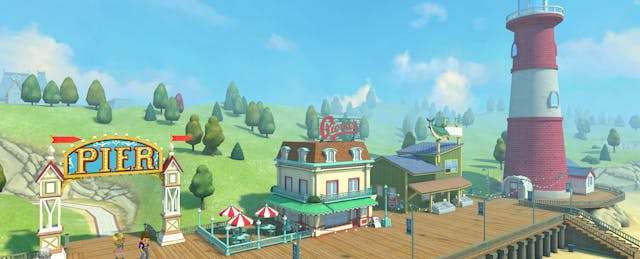How much does it cost to build educational games with all the flair and polish of their commercial counterparts? $10 million? $13 million?
Try $100 million. That’s roughly how much Age of Learning estimates it will have spent by the end of this year on “Adventure Academy,” a multiplayer online game to teach elementary- and middle-school age children subjects including math, social studies and language arts. The game, publicly available today, works on web browsers and iOS and Android mobile devices.
Creating a game that is both educational and entertaining is not for the faint of heart—or capital. Age of Learning has plenty of the latter, thanks in part to a $150 million fundraise in 2016. For the Glendale, Calif.-based company, “Adventure Academy” is the culmination of three years of development work, involving roughly 250 employees, including Kevin Beardslee (one of the original developers of World of Warcraft) and more than 3,000 beta testers.
Age of Learning is currently best known for ABCmouse, an online, early-learning program for children ages 2 to 8 used by 20 million children around the world, according to the company. With “Adventure Academy,” the company expands its reach to older students through middle school.
With visual and design elements comparable to what one might expect from a mainstream online game—including customizable avatars, live chat and an explorable open world—the game marks the most intensive development effort for Age of Learning since its flagship product.

“‘Adventure Academy’ is the next-generation version of the kind of interactive, engaging fun we have in ABCmouse but meant for older kids in elementary and middle school to engage them in a social, fun, educational world,” says Alex Galvagni, president of production at Age of Learning and a former mobile gaming executive who has worked on titles including “The Lord of the Rings Online” and “Batman: Arkham Underworld.”
In the game, players navigate their characters through a virtual world that includes a school campus (which bears a vague resemblance to Harry Potter’s Hogwarts), residential neighborhood and market. Along the way, in-game characters introduce quests and challenges to complete. Players earn points that unlock new activities and fashion upgrades to their avatars.
With several thousand activities in the form of narrated text, videos and challenges, the company says that game currently has enough content to engage children for hundreds of hours. The game does not offer a strictly directed instructional experience—it lets players stumble onto them serendipitously. Certain in-game locations, like the science hall, offer a more logical connection to the kind of content a player may expect. (When we played the game, we read and answered a series of questions about a T-Rex, fulcrums, tesla coils and the spoonbill bird.)

The curriculum, built by a team of more than 40 experts, covers roughly 100 topics across English language arts, math, science and social studies subjects. Most of the content is aligned to state and national academic standards for grades 3 to 6, according to the company.
Then there are the social chat functionalities, which parent can set as they feel appropriate. At the strictest level, children can only communicate via scripted messages. The other end of the spectrum is open chat, which allows them to befriend and speak to anyone in the world. An automated filter restricts kids from saying objectionable or personally identifiable things along with human staff who also monitor all messages.
Age of Learning says the game is certified with kidSAFE, an independent safety certification service that vets children-friendly websites and technologies.
The game was designed for the consumer family market—not schools—which is an emerging growth area for game-based learning companies. “We see ‘Adventure Academy’ as an augmentation to the school experience,” says Joel Kupperstein, the company’s senior vice president of curriculum. Families pay less than $5 per month for an annual subscription to “Adventure Academy,” or month to month for $9.99. Each of those plans is good for three student accounts.
For Beardslee and Galvagni, that pricing model offered a relief from designing for in-game monetization, a common (and often loathed) part of mainstream games today. “It doesn’t have ads, and there are no in-game purchases,” Galvagni adds. “From a game development standpoint, that frees you up.”
Beardslee, who joined the company last summer, says the company has plans to add more content to the game, including daily challenges and player rewards like new costumes and dance moves for their avatars. The company plans to hire even more employees—on top of its current staff of more than 500—to support those efforts.



